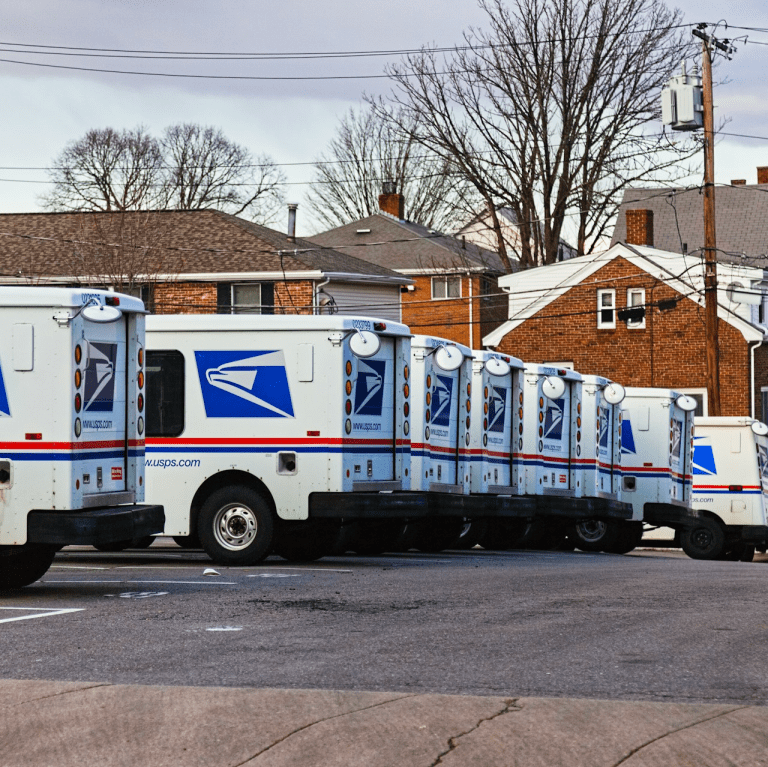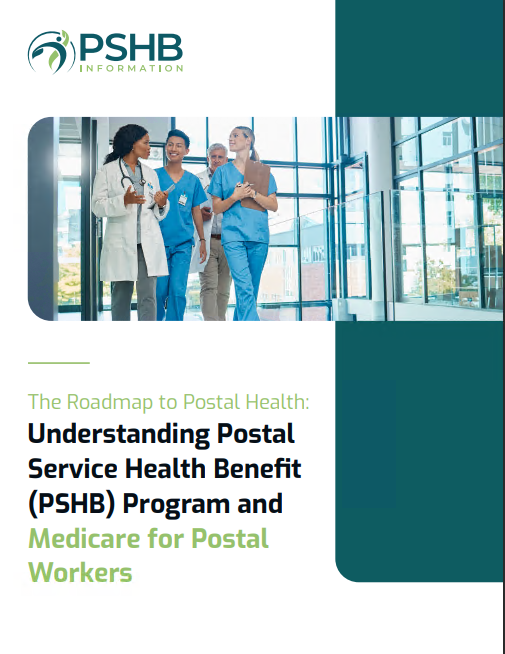Key Takeaways:
-
Enrolling in the Postal Service Health Benefits (PSHB) program is vital to maintaining your health coverage in 2025.
-
Understanding the requirements and options available under PSHB ensures you make the best choices for your healthcare needs.
Why PSHB Matters Right Now
If you’re a Postal Service employee, retiree, or eligible family member, 2025 brings monumental changes to your health benefits. The Postal Service Health Benefits (PSHB) program officially replaces the Federal Employees Health Benefits (FEHB) program, marking a significant and comprehensive shift in how you’ll manage and maintain your coverage. This transition is not merely administrative—it impacts your healthcare access, financial planning, and peace of mind. Whether you’re actively working or retired, understanding this shift is critical to ensuring uninterrupted access to essential health services and avoiding unexpected complications.
Let’s explore why PSHB enrollment is an immediate priority and how you can confidently navigate this pivotal process.
A Closer Look at PSHB Enrollment
Who Needs to Enroll?
Everyone covered under the Postal Service’s FEHB program needs to take action. This includes:
-
Current Employees: Whether you’re a full-time or part-time worker, your current health coverage shifts to PSHB in 2025. If you don’t enroll, you risk losing vital health insurance that supports you and your family.
-
Retirees: If you’re a retired Postal Service employee, you must actively enroll to maintain uninterrupted coverage. Retirees’ unique needs for stability and consistent benefits make this step even more critical.
-
Eligible Family Members: Spouses, dependents, and other qualifying individuals must also be included in the PSHB enrollment process to ensure their coverage remains intact.
Timeline for Enrollment
The 2024 Open Season (November 11 – December 13, 2024) was the primary window to switch or confirm your PSHB plan. For 2025, changes are now allowed only during Qualifying Life Events (QLEs) or the next Open Season. Missing these deadlines can result in disrupted coverage and unexpected gaps that could lead to costly alternatives.
Why Deadlines Matter
The PSHB program is specifically tailored to meet the nuanced needs of Postal Service employees and retirees. Missing enrollment deadlines means forfeiting these targeted benefits and being left with limited, often more expensive, healthcare alternatives. Don’t procrastinate; take the necessary steps today to secure your health coverage and protect your family’s well-being.
Medicare Integration: What You Need to Know
PSHB introduces unique requirements for Medicare-eligible individuals. These requirements reflect a broader strategy to optimize coverage and reduce out-of-pocket costs. If you or your dependents are 65 or older, here’s what’s new:
Mandatory Medicare Part B Enrollment
To maintain PSHB coverage, you must enroll in Medicare Part B. This applies to most retirees and family members eligible for Medicare. There are a few exceptions, such as:
-
Retirees who ceased working before January 1, 2025.
-
Employees aged 64 or older as of January 1, 2025, who may qualify for exemption.
Cost-Saving Opportunities
Many PSHB plans coordinate with Medicare to substantially reduce your out-of-pocket expenses. These enhancements may include:
-
Reimbursement for Medicare Part B premiums, which can offset your overall costs.
-
Waived deductibles or significantly lower copayments, ensuring you maximize the value of your integrated coverage.
By fully understanding and leveraging these benefits, you can achieve comprehensive healthcare coverage without overextending your finances.
Coverage Highlights You Can Expect
PSHB plans are designed with flexibility and comprehensive care in mind, catering to the diverse healthcare needs of Postal Service employees and retirees. Here are the major components:
Comprehensive Medical Services
Your PSHB plan encompasses a wide range of medical services, from preventive care to specialized treatments. Key features include:
-
Access to an extensive network of primary care physicians and specialists, ensuring you can choose providers who align with your preferences.
-
Preventive screenings and vaccinations to keep you ahead of potential health issues.
-
Emergency and urgent care coverage that provides peace of mind during unexpected health crises.
Prescription Drug Coverage
PSHB plans automatically incorporate prescription drug benefits through Medicare Part D for Medicare-eligible members. With the new out-of-pocket cap of $2,000 annually, managing medication costs has become significantly easier and more predictable. This cap represents a transformative improvement for individuals with chronic conditions requiring ongoing treatments.
Vision and Dental Options
Many PSHB plans include optional vision and dental coverage. These benefits are essential for maintaining overall health, particularly as retirees and older adults may face increased needs for specialized dental and vision care. Take time to evaluate whether these add-ons fit your healthcare priorities.
Navigating the Enrollment Process
Step 1: Review Your Options
The U.S. Office of Personnel Management (OPM) provides a detailed comparison of available PSHB plans. Invest time to:
-
Compare premiums, deductibles, and copayments, ensuring alignment with your financial and healthcare needs.
-
Consider specific coverage options for dependents, including children and spouses.
-
Evaluate supplemental benefits like dental and vision care, which can enhance your overall package.
Step 2: Prepare Your Information
To streamline your enrollment, gather the following essential details:
-
Social Security numbers for all enrollees.
-
Medicare details, if applicable, for yourself and any covered dependents.
-
Documentation for dependents, such as marriage or birth certificates, to validate eligibility.
Step 3: Enroll Online
Most PSHB enrollments are managed through an intuitive online portal. Follow these steps to complete your process:
-
Log in using your employee or retiree credentials to access your personalized options.
-
Review and select your preferred PSHB plan.
-
Confirm coverage details for yourself and any dependents.
-
Submit your enrollment and save a copy of the confirmation for your records.
Common Pitfalls to Avoid
Ignoring Medicare Requirements
Failing to enroll in Medicare Part B when required results in automatic loss of PSHB coverage. Don’t let oversight disrupt your healthcare access—confirm your Medicare enrollment as soon as eligibility arises.
Overlooking Dependent Coverage
Ensure all eligible family members are listed and verified during enrollment. Missing dependent information can result in denied claims and other complications.
Procrastination
Enrollment deadlines are strict. Missing these critical periods could leave you without comprehensive coverage until the next Open Season or a Qualifying Life Event. Act promptly to secure your benefits.
Costs and Contributions
What You Pay
PSHB plans are designed with affordability in mind. Employees and retirees generally share premium costs with the government, which funds a significant portion of the plan’s total expense. This shared structure ensures access to high-quality coverage without overwhelming individual finances.
Cost Management Tips
-
Utilize preventive services to mitigate long-term healthcare expenses. Early intervention often leads to significant cost savings.
-
Coordinate PSHB coverage with Medicare benefits to lower out-of-pocket costs further.
-
Leverage any premium reimbursement options offered by your plan to maximize savings.
Why Reviewing Your Plan Matters
Healthcare needs evolve over time. Whether you’ve experienced a new diagnosis, expanded your family, or adjusted your financial priorities, reviewing your PSHB plan ensures it remains the best fit. Use each Open Season as an opportunity to reassess and refine your coverage, guaranteeing it aligns with your current circumstances.
Getting Support
If you’re uncertain about your options or the enrollment process, numerous resources are available to guide you:
-
PSHB Customer Service: Your plan’s support team can answer specific questions and resolve issues promptly.
-
HR or Retirement Office: These offices provide personalized assistance tailored to your employment or retirement status.
-
Online Tools: Utilize plan comparison tools and other resources provided by OPM to make well-informed decisions.
The Bigger Picture: Why This Transition Is Essential
Switching to PSHB isn’t just a bureaucratic change—it represents a thoughtful reimagining of healthcare for Postal Service employees and retirees. By consolidating benefits under the PSHB program, the Postal Service offers more tailored coverage options, reduces administrative overhead, and ensures more predictable and equitable cost structures. Your active participation is essential in making this transition successful for all stakeholders.
Take Control of Your Health Benefits
PSHB enrollment in 2025 is more than a requirement; it’s an opportunity to secure the healthcare coverage you and your family deserve. By acting now, you can avoid costly disruptions, maximize your benefits, and ensure peace of mind for years to come. Don’t wait—take charge of your PSHB enrollment today and safeguard your future.










